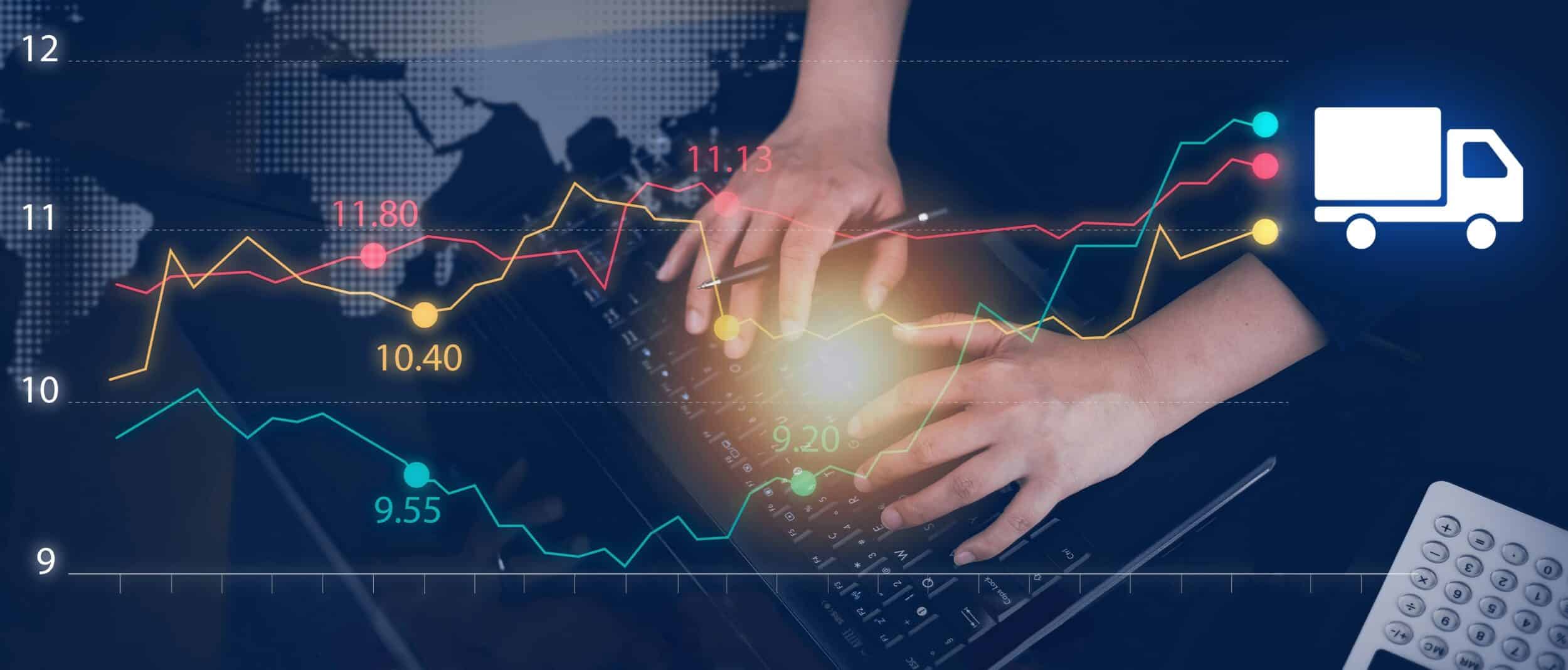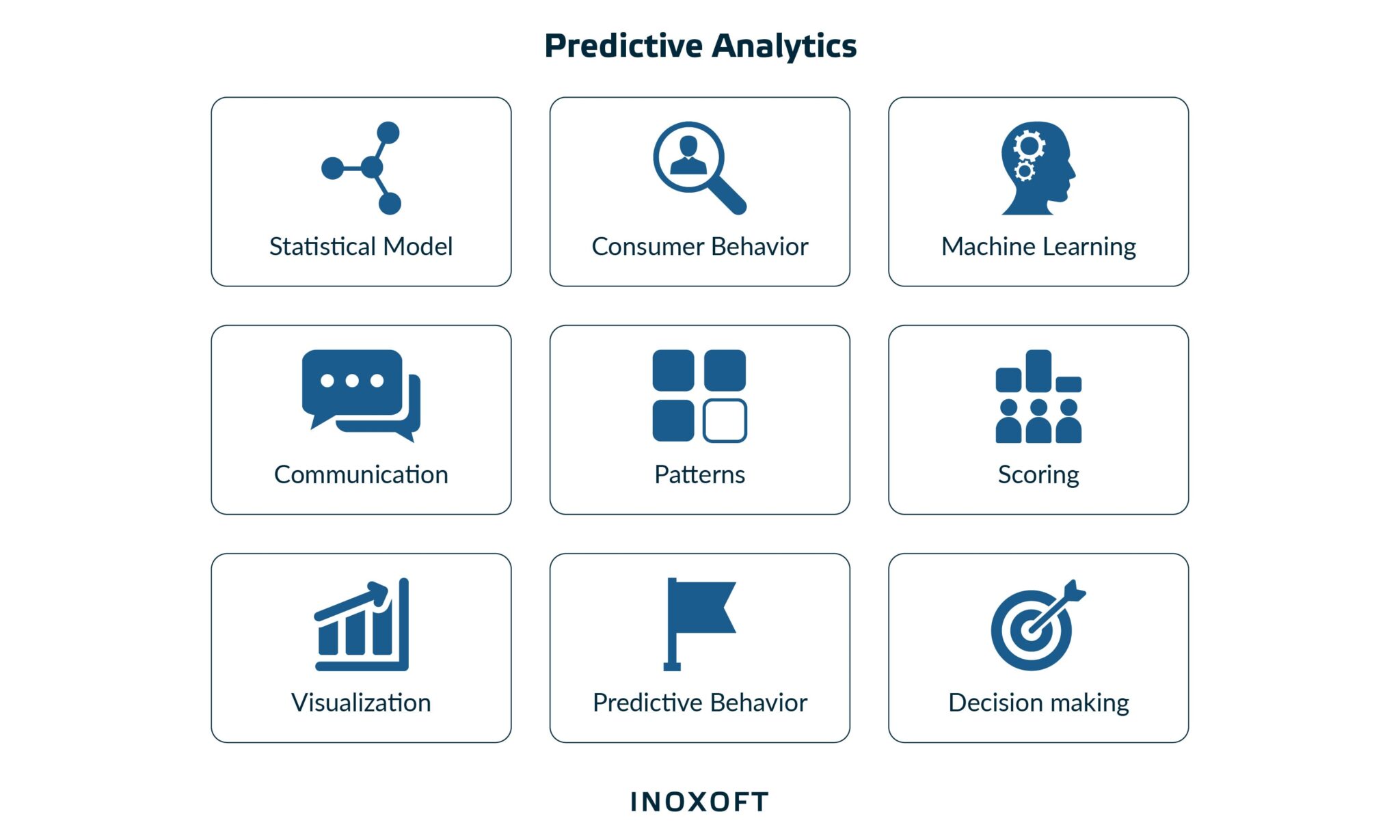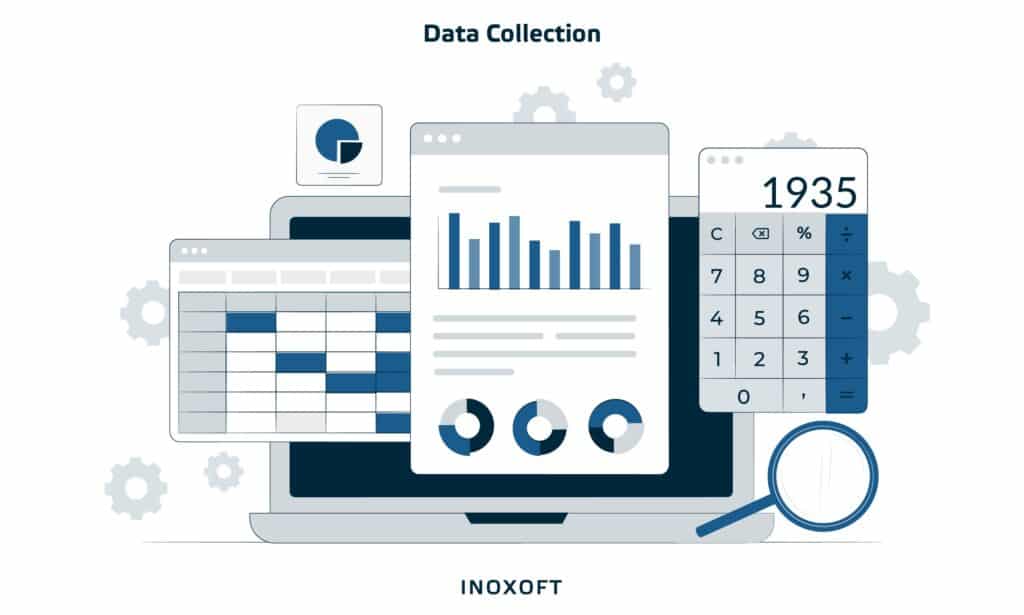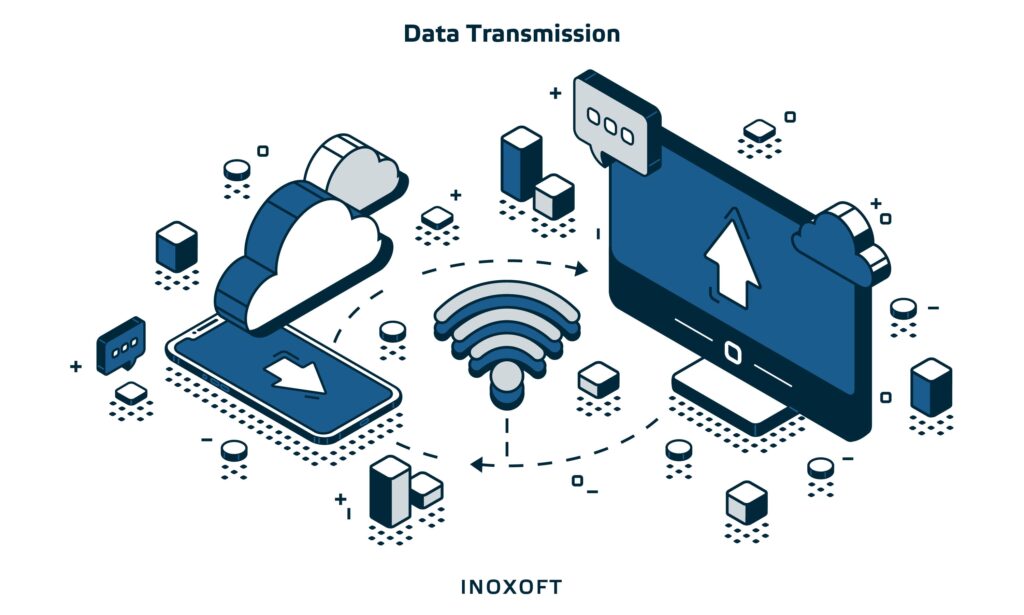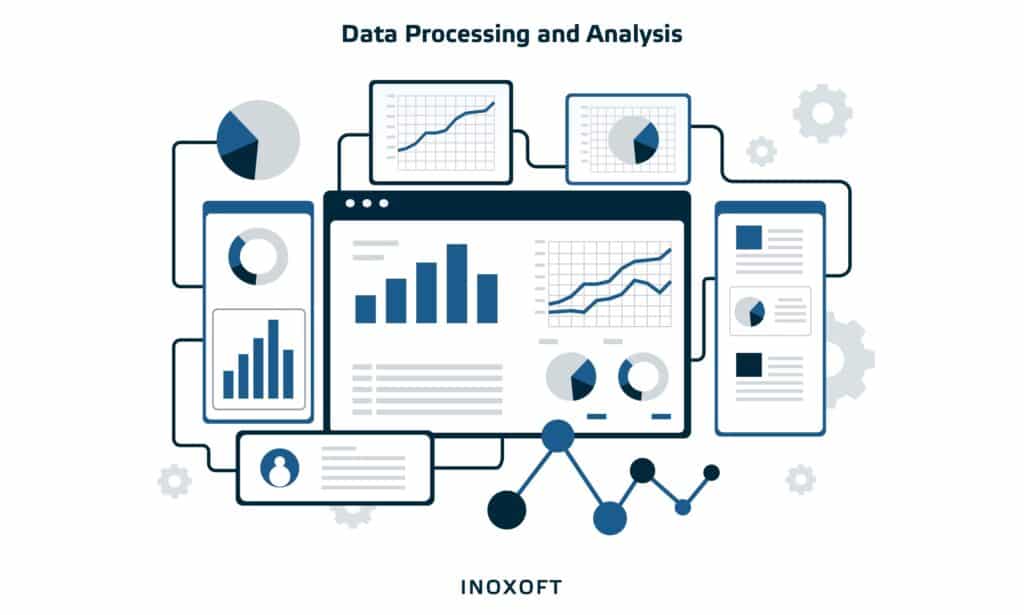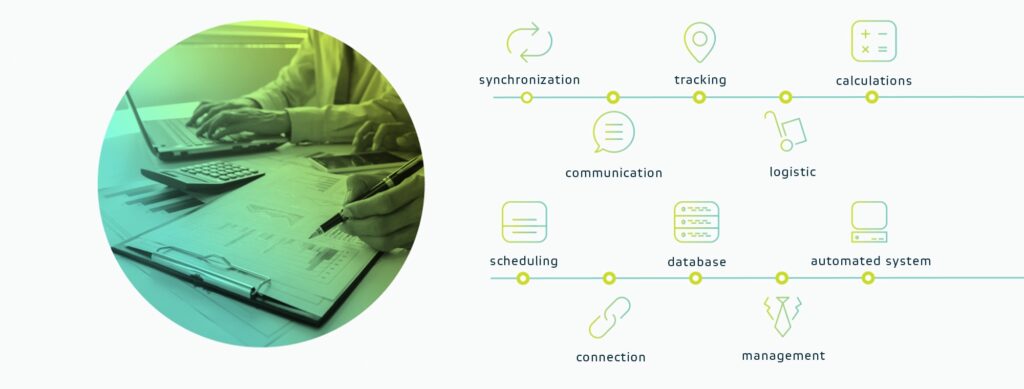The global fleet management market is to grow at a CAGR of 10.6% from 2023 to 2030, reaching $52.5 billion. There will be more and more vehicles carrying cargo. Thus, fleet managers may be overwhelmed with overseeing driver safety, fleet maintenance, and cost and budget management. Luckily, tools and technology like telematics and fleet tracking software make fleet management more straightforward and efficient.
However, the amount of information collected also grows. As a result, monitoring and analyzing data patterns became more challenging. This is where fleet management predictive analytics comes into play. It is already widely applied to help fleet managers use recorded data to analyze fleet trends, improve future planning, and make informed decisions. Moreover, the global predictive maintenance market is anticipated to grow to $64.3 billion by 2030.
This article will explain what predictive analytics is, how it works for fleet maintenance, and how to use predictive analytics for fleet management. Finally, we will introduce Inoxoft, an international development company that provides custom logistic software development services, and review the company’s case of predictive analytics for fleet maintenance software development on the example of the smart enterprise system.
- What is Fleet Management?
- What is Predictive Analytics in Fleet Management?
- Difference between preventive and predictive fleet maintenance
- Benefits of using preventive analytics for fleet management
- How Does Predictive Analytics for Fleet Maintenance Work?
- Data collection
- Data transmission
- Data processing and analysis
- How To Use Predictive Analytics in Fleet Maintenance?
- Smart Enterprise System: Inoxoft Case Study of Predictive Fleet Management Application
- Consider Inoxoft Your Trusted Partner
What is Fleet Management?
Fleet management is a comprehensive approach to overseeing and optimizing a company’s vehicle fleet, which involves a range of activities — from vehicle acquisition and maintenance to driver management, fuel efficiency, and overall operational efficiency. The primary goal of fleet management is to ensure that a company’s vehicles are operating efficiently, safely, and cost-effectively.
Fleet management is a holistic approach that involves strategic decision-making, efficient maintenance practices, driver management, and the integration of technology to ensure the optimal performance of a company’s vehicle fleet. By implementing effective fleet management practices, organizations can enhance operational efficiency, reduce costs, and promote safety and sustainability within their transportation activities.
In more detail, fleet management touches these aspects of fleet operations:
- Vehicle acquisition involves decisions about the types of vehicles to purchase or lease based on the organization’s needs. The selection process may consider factors such as the type of goods or services being delivered, the terrain in which the vehicles will operate, and environmental considerations.
- Regular and proactive maintenance is essential to keep vehicles in optimal condition, minimize breakdowns, and extend their lifespan. Fleet managers often implement preventive maintenance schedules, conduct regular inspections, and leverage technology to monitor the health of the fleet.
- Effective driver management involves monitoring driver behavior, adherence to regulations, and providing training when necessary. Technologies such as GPS tracking and telematics systems can assist in monitoring driver performance, fuel consumption, and route efficiency.
- Fuel management is a significant concern in fleet management due to its impact on operating costs and environmental sustainability. Fleet managers often implement strategies to optimize fuel efficiency, such as route planning, vehicle maintenance, and the use of fuel-efficient technologies.
What is Predictive Analytics in Fleet Management?
Predictive analysis in fleet management uses data, algorithms, statistics, and machine learning to foresee issues with fleet management. The latter may include driver behavior, fuel costs, safety concerns, maintenance problems, etc. Instead of making reactive decisions, fleet managers employ predictive fleet management data analytics.
Many sources, including telematics devices, provide historical data for predictive analytics. Data processing options include a variety of statistical analysis techniques. Using predictive analytics in fleet management, like AI-powered solutions and machine learning, can improve statistical analysis to provide a speedy and accurate analysis of enormous amounts of data.
Predictive analytics for fleet management is an excellent tool for:
- Driving risk analytics
- Analysis of equipment usage
- Schedules for fleet productivity
- Upcoming maintenance schedules
Read our guide to predictive analytics and big data analytics for more details.
Difference between preventive and predictive fleet maintenance
Preventive fleet maintenance system spots existing problems, while a predictive analysis in fleet maintenance can identify problems before they appear. The traditional method to maintain the fleet was to take a vehicle out of the route for a scheduled check every 3,000–4,000 miles or 10,000–12,000 hours. Preventive maintenance was costly and inefficient. Therefore a need for a new approach arose.
Predictive fleet maintenance allowed switching from making assumptions and following rigorous schedules to data-driven decisions and real-time equipment monitoring. Predictive software for fleet maintenance can collect information on specific vehicle parts that affect maintenance, including tire pressure and oil, and schedule equipment repairs only when conditions go beyond a certain point and are most likely to cause problems.
| Preventive Fleet Maintenance | Predictive Fleet Maintenance | |
| Method | Assumptions | Data-driven decisions |
| Frequency | Scheduled checks every 3,000–4,000 miles or 10,000–12,000 hours | Real-time equipment monitoring |
Benefits of using preventive analytics for fleet management
Today, most business decisions are data-driven. Organizations can exploit the value of their data using predictive analysis in fleet management and fleet analytics, enabling intelligent business decisions.
- Making predictions based on equipment measurements and contextual information. Machine learning in fleet management can identify specific failure situations. Thus, you’ll know the status of individual vehicle parts and the circumstances of vehicle exploitation.
- Solving problems before they materialize. Fleet management businesses use predictive analytics software to continuously monitor vehicles in real-time to identify issues before they become costly problems.
- Saving time. The most significant resource when trying to identify possible fleet problems is time. Finding an issue only minutes before it results in a traffic accident or cargo damage is useless. Fleet management and fleet analytics solutions help to save time, identifying issues in advance and giving more time to take action.
- Reducing costs. Fleet managers can forecast issues, trends, and behavioral patterns by mining and analyzing this data. Fleet owners can identify problems and save money using information from telematics and other data sources.
- Increasing vehicle availability. Predictive maintenance minimizes downtime brought on by needless repairs because maintenance is only scheduled as needed. Therefore, vehicles can be used more effectively.
- Boosting drivers’ efficiency. AI-driven predictive software simplifies carrying out repairs and takes preventative action to avert connected problems. As a result, drivers stay safe on the road, and fleets avoid losing their equipment for extended periods of time to discover all defects.
- Controlling fuel consumption. Efficient predictive maintenance can reduce fuel use. AI-powered solutions in fleet management can be used to identify pressure variations caused by regen. Therefore, the system can indicate when a diesel filter needs to be replaced.
How Does Predictive Analytics for Fleet Maintenance Work?
Decisions based on telematics data promote tech-driven fleet maintenance. Businesses may proactively identify fleet issues thanks to the combination of massive amounts of fleet management data collected with IoT devices and powerful machine learning for fleet management.
By using predictive analytics for fleet maintenance, managers can spot trends, anticipate issues before they arise, and maintain the fleet sustainably. Simply put, there are three primary stages of fleet predictive analytics:
- Data collection
- Data transmission
- Data processing and analysis
Data collection
Fleet management companies can switch from reactive to preventive actions by using telematics data. This way, they can deal with minor issues before they become major. Connected IoT sensors can track mechanical problems in real-time and issue Diagnostic Trouble Codes (DTCs). Fleet maintenance management systems use this data for analytics and predictive maintenance planning.
Data transmission
Software for fleet management analytics collects data in buckets and in real-time. Trucking maintenance software needs a flexible design that enables simple integration of third-party services for extra contextual data due to the volume of data from the numerous sensors and vehicles. Big data sets may be processed using cloud computing capacity, allowing organizations to switch to SaaS business models focusing on customers.
Data processing and analysis
AI is essential when making forecasts using telematics data. With collected information and sensor fusion algorithms for autonomous driving and AI for fleet maintenance software, fleet companies can find early warning indications of probable equipment failure.
To make accurate machine learning predictions for fleet maintenance, you must adhere to a particular flow:
- Establish health conditions and automotive quality control procedures for each car component based on historical data to train the machine learning model to spot anomalies.
- Monitor equipment health in real-time and train the model to detect abnormalities to ensure a steady supply of recent data.
- Inform service managers of danger indicators so they can schedule maintenance or promptly pull a vehicle off the road and integrate the machine learning engine with notification systems.
How To Use Predictive Analytics in Fleet Maintenance?
Predictive models come in many shapes and sizes, and they depend on the behavior or event that needs to be predicted. Predictive analytics software can assist in identifying recurring problems with your fleet based on historical data so you can look for a fix.
How to use predictive analysis in fleet management? The following methods are employed in the examination of recent or historical data to produce future predictions:
- Statistics
- Modeling
- Machine learning
- Data mining
The collection and analysis of actual fleet data is the key component for any effective predictive analytics. Fleet operations, safety, HR, and IT departments must all be involved for the process to be successful; additionally, the entire organization must adopt the approach.
You must choose the appropriate data for analysis and locate the problem regions to address it. To do that, select the areas with the greatest demands, such as driving safety, fleet maintenance, or downtime. Then make sure you are gathering the data linked to those areas from several data sources to minimize data overload and concentrate on the areas with the most impact.
Remember that the software development company or vendor you choose will play a big part in how effective the information is while making your decision. For fleet managers to act wisely based on the data acquired, the final product you utilize must process and convey the information in a clear and comprehensive style.
Smart Enterprise System: Inoxoft Case Study of Predictive Fleet Management Application
The client needed a solution to fix issues with the sales process, improve service tracking, and optimize logistics. Having a substantial number of vehicles and contracts, the company lacked a universal and consistent system for tracking the processes.
Inoxoft team was challenged to build a system to solve the following tasks:
- Accurate inventory reporting
- Profitability calculation
- Synchronization with external sources
- Scheduling
- Expense counting
- Customer relationship management
- Labor management
- Easy access to the customer journey and control
Our team such technologies as .NET core, AngularJS, Azure, SQL, and Telerik to build a solution that allowed to track operation-related damage requests, automate the system of quote profitability calculations, and implement role-based access control. Moreover, the new system connected and synchronized the internal database with external ones solved logistics tasks and ensured efficient customer communication through a cutting-edge CRM.
As a result, thanks to the contract evaluation, the system could choose the most lucrative ones for the client. It enabled the automation of payments for any logistics damages or penalties, planning logistics chores, enhanced sales procedures, and optimized the use of the clouds.
Read more about the benefits of a smart enterprise system for logistics in a separate article.
Consider Inoxoft Your Trusted Partner
Inoxoft is a software development company that offers custom logistic software development services. With seven years of expertise in digitalizing and modernizing services for clients worldwide, we drive data collection for improved performance, real-time fleet management, vehicle tracking, and numerous technologies for improved predictive analytics.
Inoxoft provides big data analytics and data science services to draw out vital information from data and implement practical solutions at the tactical, operational, and strategic levels. You will find our data analytics services helpful in collecting your data from various sources, structuring it, finding the right tools to process large and important datasets, and making data-driven decisions.
Our experts have experience in automatic language recognition, machine learning, statistical analysis, sales forecast, cost-benefit analysis, and marketing improvement. Additionally, Inoxoft engineers have experience in several different areas, including big data analytics in logistics.
We have built a smart enterprise system that allows our clients to monitor damage requests related to operations, automate the system of calculating quote profitability, and establish role-based access control. Furthermore, the new system of predictive analytics in enterprise fleet management resolved logistics issues, ensured effective customer communication, and integrated and synchronized the internal database with external ones.
Our clients from the USA, UK, Sweden, Netherlands, Canada, Israel, Germany, and other countries use our logistics software solutions to expand their businesses. Thanks to our logistics software development services, our clients have strengthened their market positions, formed dependable customer relationships, and increased their ROI.
Contact us to consult deeper on predictive analytics for fleet management.
Frequently Asked Questions
What is fleet predictive analytics used for?
Predictive fleet analytics is used to view fleet arrivals, delays, and collect data to foresee fleet management issues. It allows using more precise and thorough data than ever before to save time by better understanding route and traffic levels and vehicles' estimated arrival timings. The gathered data shows the most frequent reasons for accidents and provides guidance on preventing them.
How does fleet management analytics work?
Fleet management data analytics are based on various data types, including telematics data, data from various cloud or edge devices, GPS, vehicle cameras, traffic cameras, and driver monitoring programs. Fleet predictive analytics' three main stages are data collection, data transmission, and data processing and analysis.
What is predictive analytics in fleet management?
Predictive analytics in fleet management software uses data, algorithms, statistics, and machine learning to anticipate possible issues and show trends in factors such as driver behavior, fuel costs, safety concerns, maintenance issues, and more.
